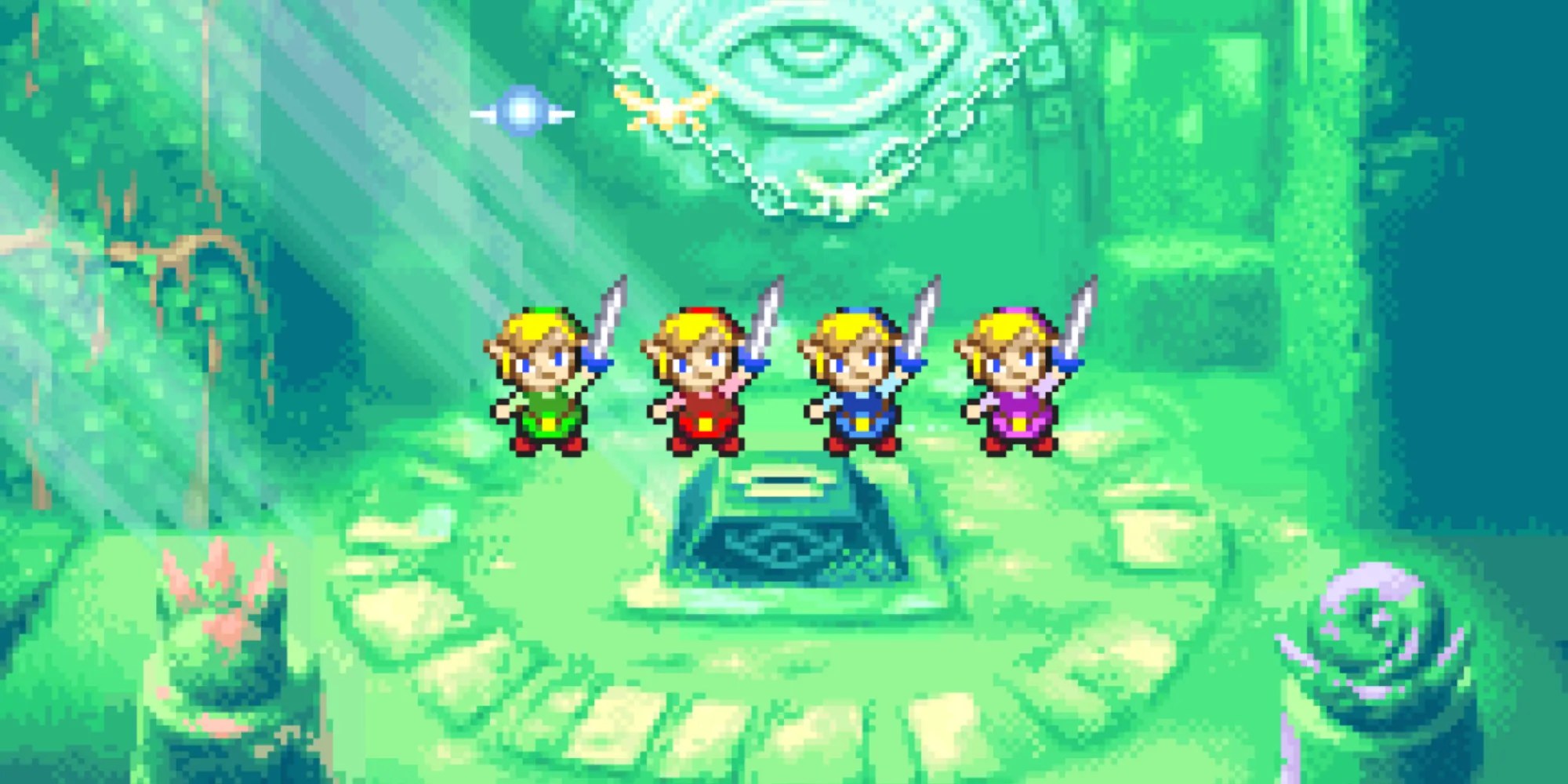Summary
Nintendo rarely (if ever) puts out a bad-looking game.The Legend of Zelda, being one of their most recognizable and successful franchises, is especially subject to the high bar of quality the company is known for.
But while every game is beautiful in its own way, some titles are polished with more splendor and majesty than others. In some cases, technology wins the day; in others, with style. Either way, each adds to the series' rich tapestry.

14Phantom Hourglass / Spirit Tracks
Although the design ofPhantom HourglassandSpirit Trackswas based on the “toony” cel-shaded style ofWind Waker, unfortunately, they weren’t brushed with the same magic. While character models look pretty good for a DS game, the environments lacked the flourish seen on the Gamecube classic.
Because of the lower resolution and lack of fine details, the painterly style leaves the rest of the world looking rather flat and uninspired, especially when compared with the charming character models.

13Four Swords
The Four Swordsseries began as a multiplayer mode on the Game Boy Advance’s interaction ofA Link To The Past, then spun off into a game of its own on the Gamecube (Four Swords Adventures). The multiplayer experience for the classic SNES port was developed around the same time that a certain Gamecube hit was winning over fans with its colorful new style.
The result wasA Link To The Past’s art style blended intoWind Waker’s cel-shaded “toony” look. Unfortunately,Four Swordslooks caught in a muddle of two unrelated styles.Nintendo 2.5D-style games certainly have their appeal, but here, the brittle bits mar the smooth, whimsical quality ofWind Waker.

12Gameboy Era
Although the threeZeldaGameboy games (four if DX is counted separately) were absolute bangers, the art style would have definitely felt like a step down from those who had played the SNES entry just a year earlier. Although they do the job fine, characters and enemies are much less expressive.
The environments certainly have their charm, especially those inOracle of Seasons, in which Link could change the seasons with a magical rod, pushing the limits of the Gameboy Color to its physical limits.

11The Legend Of Zelda (Classic)
Sometimes, innovation is born from necessity. While it may not be much to look at today, the originalLegend of Zeldadid a lot of heavy lifting with its art style, and impressed 80s gamers far and wide with its flashing neon rupees and oddly stark desert pastels.
Far from being the first top-down adventure game,The Legend of Zeldacodified most of the visual principles the series would be known for, especially for the 2D titles: rupees, enemy models, and the land of Hyrule all followed from the source.

10Skyward Sword
As with everyZeldaentry by Nintendo,Skyward Swordmeets a certain threshold for quality in terms of its looks. However, like the game itself, it does little to innovate from what fans of the series had seen before.
To some,Skyward Swordwas simply aTwilight Princesswith a more vibrant color pallet. There’s nothing necessarily wrong with that, but it just didn’t do much to push boundaries or stand out from an already stellar array of styles.

9A Link Between Worlds
Getting a cohesive art style right inA Link Between Worldswould have been extra important, seeing as the game’s selling point was the ability to “shift” into a hieroglyph while against walls. There are some amazing effects inA Link Between Worlds, and it has many excellent nods to its predecessor,A Link To The Past.
However, perhaps to provide contrast with the trippy 2D segments, the characters in the 3D world do look a little unrefined. This is perhaps because each sprite fromA Link To The Pastwas modeled into 3D space, meaning that they lost some of their pixilated charm.

8A Link To The Past
This was the title that launched a thousand pixilated dreams, and, arguably, where the series began shaping its iconic aesthetics in earnest. Characters are expressive in or out of cutscenes. The environments are luscious and vibrant, and the effects provide atmosphere and immersion with rain and fog.
As well as the starting point ofgreat storytelling in the series,A Link To The Pastwas where Nintendo arguably mastered the top-downZeldastyle and look with sprites and backdrops that are easy on the eye.

7Twilight Princess
WhileTwilight Princessdidn’t exactly take a wild detour with fans' expectations, it did deliver what many had been waiting for years (sinceThe Ocarina of Timedays) for a mature, high-fidelity adult Link adventure.
The game took on a more serious look with its broody tones, especially during moments involving Twilight Beasts or the Twilight Realm. Compared to the previous, sea-faring adventure, the visuals can look a little washed out in parts. That being said, it managed to do the impossible and fulfill many fans' wildestZeldadreams.

6The Minish Cap
While other titles attempted to adapt theWind Wakerstyle to the classic SNES style,The Minish Capfinally managed to capture the fluid movements and flashy animations that made the first “cartoony” outing such a hit.
Link’s ability to shrink down in size (smaller than a shoe!) probably prompted discussions in the developer’s room aboutmaking the pixilated environment feel extra lush and detailed, which is exactly what fans got in this GBA classic.

5The 3DS Remakes
Improved facial animations, more detailed textures, and impressive 3D special effects built on top of the originals' rock-solid art styles make theOcarina of TimeandMajora’s Mask3DS releasesalmost as timeless as the originals.
However, as faithful as these games are to the original, even with such painstakingly detailed beautification, it’s undeniable that something is lost. An element of grittiness was lost that the N64 managed to capture (perhaps by accident), especially in the more somber and nightmarish of the two,Majora’s Mask.